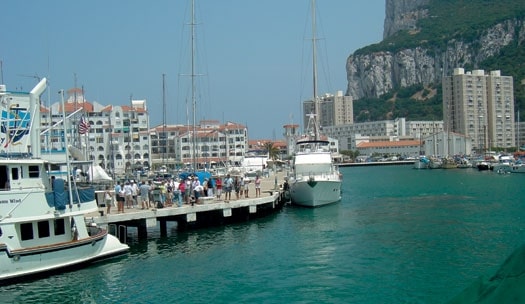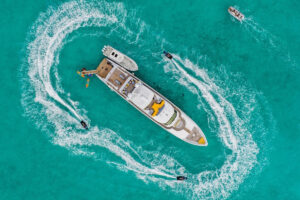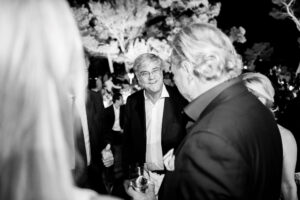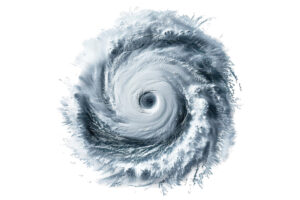
yachting/images/magazine/2005/042005/cr_cruising_525x304.jpg
She had crossed the Atlantic in July as the main escort vessel for the Nordhavn Atlantic cruise. I had crossed the pond numerous times myself, including serving as navigator on a couple of high-speed record attempts for Richard Branson. With our respective bluewater resumés, you’d think the sea route between Gibraltar and the English Channel would be a cakewalk for the Atlantic Escort and me; after all, it is a well-trodden path if you are a British sailor. I’d first taken this route going the opposite direction as a young apprentice on board a freighter 55 years ago-all the way down to Gibraltar, into the Mediterranean and on to the East via the Suez Canal. It was my first trip to sea, and my memory is mainly one of constant seasickness. Since those days I have done the trip in a wide variety of boats and ships, but never in a trawler yacht. So when Nordhavn came up with the offer of making a passage in their fabled 57 I jumped at the chance.
Atlantic Escort is now a well-known boat after its role on the Nordhavn Atlantic cruise, and had certainly proved its mettle leading 17 other trawlers on the 3,800-mile transat (“Gibraltar,” Sept. 2004). While in comparison it might seem tame to make this passage up the coasts of Spain and Portugal and then across the Bay of Biscay, in my experience these European waters can provide a much greater challenge. Here you have to cope with the very large tides and strong currents along the coast, the often turbulent waters around Cape Finisterre at the top corner of Spain and then the Bay of Biscay, which is only one of the most feared stretches of water in the eyes of sailors around the world.
This Bay of Biscay is a wide concave sweep of water that stretches around the western coast of France and along the northern coast of Spain. Combine this geography with the prevailing westerly winds that sweep in from the Atlantic, and you have one long, 310-mile lee shore. Naturally sailing ships have a great fear of getting embayed here after a succession of westerly gales, but it gets worse because when the stormy waters driving in from the Atlantic meet the shallower coastal shelf of the Bay they build up into notably ferocious seas.
I had one of my closest escapes from disaster in the Bay when our ship developed a 30-degree list in a storm. We were literally walking on the bulkheads as the ship rolled in the big seas, and I can still conjure the enormous sense of relief I felt when the storm abated.
As far as boats go, the Nordhavn 57 was the perfect boat for this voyage. It certainly looks the part with its sturdy hull lines and workmanlike pilothouse. To someone who has spent most of his time on twin screw boats I was a bit concerned about the single engine in terms of reliability, but relaxed when I learned this is covered on the 57 with a wing engine that serves as both auxiliary power and a “get you home” engine, albeit at four knots.
My only other concern was personal. I’d been given an appointment with a heart surgeon, and the date, close to our estimated time of arrival in the Channel, would mean we’d need to make good progress. The diagnosis was angina; my very good doctor thought I was a worthwhile case to forgo open-heart surgery for an angioplasty.
All in all, it was shaping up to be an interesting test of the 57-and my standing with Poseidon. The forecast was not good when we set from Gibraltar on Monday. The forecasters were suggesting that the winds would freshen from the northwest, bringing in 10-foot seas from the Atlantic once we rounded the southwest corner of Spain. With an easterly wind at Gibraltar, however, the chance to get started was too good to miss so we left.
Coming out of the Bay at Gibraltar our main problem was the traffic heading out from Algeciras across to Tangiers in Africa. These are busy waters, full of local boats and ferries. The big ship ferries were not a problem; with their 20-knot speeds they were easily avoided. The fast ferries, however, do make you nervous in a slow boat. With one of these 40-knot monsters rushing up on the starboard bow it is difficult to judge the collision risk-one came quite near, but passed clear across our bow, leaving us rolling in its considerable wake.
Time to put the stabilizers on-and what a difference they made. This was the first time I’d run a boat of this size with stabilizers; suddenly we were on a magic carpet ride with the boat running level and true. It did seem that the pitching increased when the stabilizers were on, but I suppose the motion of the waves has to be accommodated in some way.
We followed the inside channel through the Straits of Gibraltar to avoid the strong tides that always seem to produce rough water in this area. The rules say you can keep inshore in any vessel up to 70 feet in length; above that you have to follow the shipping lanes and mix it up with the rough water and the big ships, both offering a recipe for potential disaster. Rounding the distinctive lighthouse at Tarifa, and its point, which has seen ships since the first Phoenicians braved this route, we set course for Cape Trafalgar. The site of Admiral Nelson’s famous victory (and death) in 1805, it is an emotional spot for any true-blooded Englishman.
As dusk was falling the forecast started to come true with the wind swinging through 180 degrees. Now we were heading directly into it. Mild at first, the head wind did not slow our 10-knot progress, but you could see the potential for discomfort as we crossed the shallows off Cape Trafalgar. Here the outgoing tide, the shallows and the opposing wind combined to kick up a nasty steep tumbling sea. I don’t like going into the night with a deteriorating forecast, but we had no choice if we were to make progress westward. It is in conditions like these that you have one eye open for possible ports of refuge. Later, as the wind increased to the promised 20-knot head wind, we eased our speed to reduce pitching.
Spanish fishing boats come out at night and as they showed no intention of allowing us priority passage, we had to weave our way through their erratic courses. One did not have any lights on at all, but fortunately the Furuno radars picked it up and we could take evasive action. Was it a smuggling boat pretending to be a fishing boat? Perhaps. In any case, these maneuvers certainly helped to keep us awake on the night watches.
It takes time to get used to a new boat and there was a lot to learn on the 57, particularly on the electronics side. The two Furuno radars were quite straightforward; their ARPA capability made collision avoidance much easier with a vector line showing the heading and speed on the other vessel. This takes a lot of the guesswork out of the maneuvers. The Nobeltec chart plotter was much more difficult to understand: I do prefer the type of plotter that has dedicated keys. To get any information out of the Nobeltec required at least three clicks on the portable point and shoot mouse, and this was not easy on a moving boat.
The satellite compass registered with pinpoint accuracy, giving not only a true heading but also one that read out to a 10th of a degree. This precision was more useful than the Nobeltec’s, which gives the cross-track error to three decimal places of a foot-a bit of overkill that only serves to confuse a hard-pressed navigator.
Sleep was not easy to find as we pitched into the head seas; the forward bunks gave a lively ride. The regulars in the crew all gravitated aft to the saloon settees, leaving me to levitate above the bunk whenever the boat took a downward pitch. Twenty-four hours into the passage saw us a bit bruised and battered-but worse was to come as we rounded the well-defined headland of Cape St.Vincent and hit the true Atlantic Ocean. As we moved out of the shelter of the land and altered course to the north, the northwesterly wind had a chance to attack the other side of the boat. Soon the windscreen was constantly awash and we looked like a film still from The Perfect Storm.
Here was the test, especially considering our speed of progress. We maintained over seven knots during the rough head seas; the Lugger diesel ran without a moment’s hesitation the whole time. Occasionally the bulbous bow would lift clear of the water and return in with a shudder that ran through the whole boat, but most of the time the ride was lively rather than violent. The 57’s bulbous bow certainly seemed to moderate the pitching, allowing life on board to go on pretty much as normal-normal, that is, for seagoing life in the open ocean. Looking back, I can state that the 57 coped extremely well with the conditions. If this is an example of what a trawler yacht can cope with, then count me as a convert.
The forecast was not offering a lot of respite and so I noted the Portuguese capital of Lisbon to the north as our next possible refuge. By the time we got abeam, however, things had eased off and every hour saw the mood changing for the better. The big Atlantic swell was still there, but the 10-foot seas with their short wavelength had died down. Hot food became a possibility for the first time. And, in fact, I loved the style on board-even in the roughest spots, the cook wore an apron. And the galley’s facilities could grace an expensive restaurant.
Passing between the island of Berlengo and the mainland the next morning made for a serene sight. But reports were coming in of nasty storms for the sea ahead. The shallow depression over Spain that had caused us grief the first night out was now deepening and moving north; at our destination in the English Channel, violent gales were forecast. Though with luck the storm might ride ahead of us and disappear by the time we got there in three days’ time, we were concerned that we still might get some nasty seas in the aftermath.
You cannot change the weather. But you can change your tactics, and so our game plan was to keep going up to Cape Finesterre, the northwest corner of Spain, and then see what things looked like. After that headland we would be committed to 360 miles of open water-crossing the notorious Bay of Biscay with nowhere easy to run for shelter. If we wanted, we could wait a day in La Corunna, the harbor just around the headland, to allow things to settle down. But that was a decision we could put off until the following morning, so, with a bright sun and dying seas, and with visits from the occasional dolphin, we kept heading north.
Sunrise over Cape Finisterre. We kept inshore around the succession of headlands while I wrestled with my choices. I was running out of time at sea; I had an appointment with the heart surgeon; the sea ahead would be rough. Though part of me wanted to test the Bay of Biscay once again, the common sense decision had to be made: go into La Corunna. Not only could I get off but there would also be good weather forecasts obtainable here that could point the way ahead for those who stayed behind with the boat.
So we entered La Corunna harbor in mid-afternoon, watched over by the dominating Torre de Hercules light. I was sad to leave both the boat and the crew. This bluewater man was certainly a convert to the concept of the trawler yacht and the Nordhavn has to be the boat for anyone contemplating serious cruising. The only real limit to its capabilities seems to be the capability, and health, of its crew. Of course you try not to mix it with severe weather, but if you do get caught out in the open ocean I know I would feel a lot more comfortable in a Nordhavn than in most other boats that I have experienced.
Editor’s note: Dag’s angioplasty went well and he has since recorded a perfect checkup, all without missing a beat-or a boat test.







